Stainless steel tubing (or SS tubing for short) is a popular metal form used in a broad range of industries. As hollow, cylindrical forms, stainless steel tubing or pipes work perfectly as both stand-alone channels through which fluids (gases and liquids) can pass and as parts of larger equipment or systems. Read More…
Cada Stainless & Alloys has the stainless steel tubing that you need. We also specialize in the supply of stainless steel strips and coils, providing many finishing options, processing options, and other customization options.
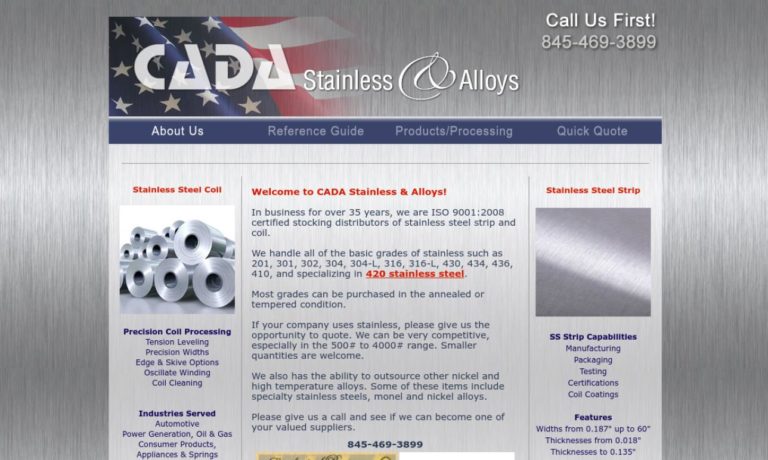
Welded Tubes has a variety of tube shapes and tube sizes: squares, rectangles, hexes, octagons, etc., including many metric OD's. We make automotive, retail, safety, and medical tubing. Our steel tubing is suitable for any applications, including for high-end consumer products; it is high strength, made to tight tolerances, and aesthetically pleasing.
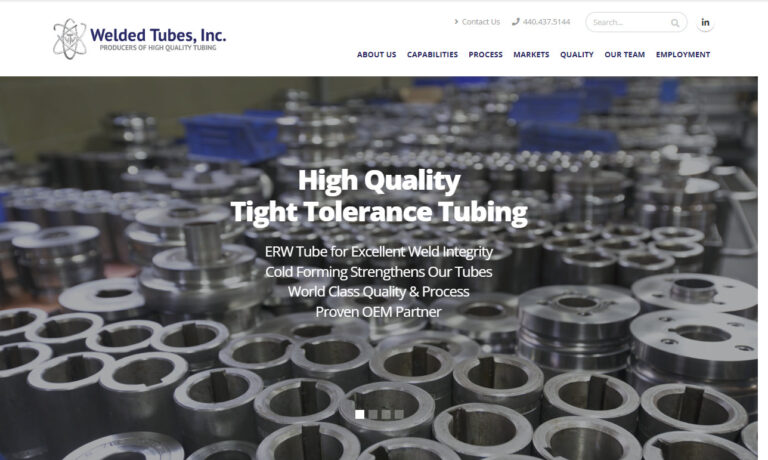
Welcome to Appleton Stainless Incorporated, where we pride ourselves on our expertise in providing high-quality stainless steel tubing solutions to meet the diverse needs of our clients. With years of experience and a commitment to excellence, we have established ourselves as leaders in the industry, delivering innovative products and services tailored to exceed our clients' expectations. Our...
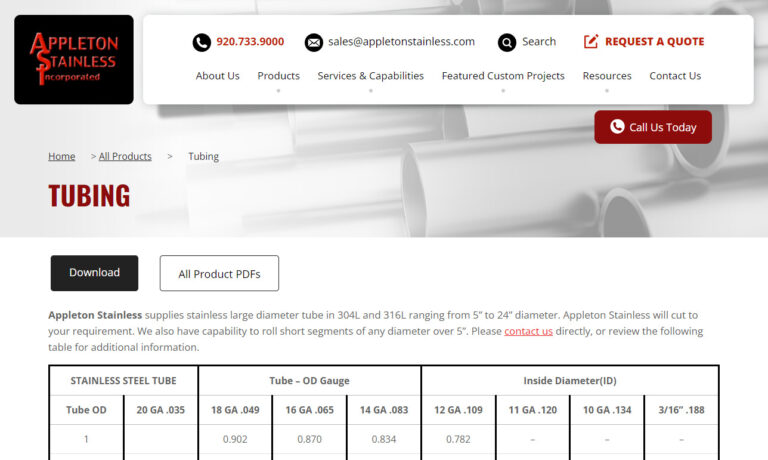
You’ll find the finest structural and ornamental polished stainless steel tubing at Century Tube Corporation! This stainless tubing manufacturer solves a broad range of stainless steel tube applications in a variety of industries. Discover the complete capabilities of one of the oldest and strongest stainless steel companies!
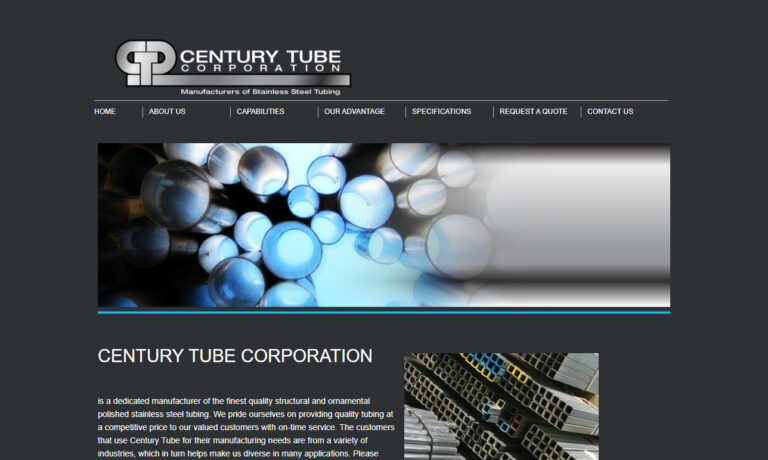
More Stainless Steel Tubing Manufacturers
Stainless steel tubing is a type of hollow cylindrical product made from stainless steel, a corrosion-resistant alloy that contains a high percentage of chromium. It is commonly used in various industries and applications due to its excellent mechanical properties, durability, and resistance to corrosion.
The manufacturing process of stainless steel tubing involves the use of stainless steel billets or strips, which are heated and formed into cylindrical shapes. These shapes are then further processed through various techniques such as hot or cold rolling, welding, or seamless extrusion to produce the desired dimensions and specifications.
Stainless steel tubing is available in a wide range of sizes, wall thicknesses, and grades to suit different applications. The tubing’s dimensions are typically specified by the outside diameter (OD), inside diameter (ID), and wall thickness. Common shapes include round, square, and rectangular, with round tubing being the most prevalent.
Stainless steel piping is similar to stainless steel tubing in many ways, but there are some key differences between the two. Stainless steel piping refers to a system of interconnected pipes used for the transportation of fluids or gases. It is commonly employed in industries such as oil and gas, petrochemical, chemical processing, food and beverage, pharmaceuticals, and plumbing. Stainless steel piping systems are designed to withstand high-pressure conditions and are often used for critical applications where reliability and safety are crucial.
There are some other notable differences between stainless steel piping and tubing, including:
Size and Dimensions: Stainless steel piping generally has larger outside diameters (OD) and thicker walls compared to tubing. Piping is typically used for high-volume fluid or gas transport, requiring larger flow rates. Tubing, on the other hand, is commonly used for smaller-scale applications such as instrument lines, heat exchangers, or architectural purposes.
Manufacturing Standards: Stainless steel piping is typically produced in accordance with industry-specific standards, such as the American Society of Mechanical Engineers (ASME) B31.3 or the American Petroleum Institute (API) 5L for oil and gas pipelines. These standards dictate the manufacturing processes, materials, testing, and installation guidelines to ensure the integrity and safety of the piping system. Tubing, although subject to certain standards like ASTM A269 or ASTM A554, often has more varied applications and may have less stringent requirements.
Joining Methods: Stainless steel piping systems commonly use welded connections due to their higher pressure and load-bearing requirements. The pipes are often welded together using techniques such as butt welding or socket welding. Tubing, on the other hand, can be joined using various methods, including welding, compression fittings, flaring, or mechanical connections, depending on the specific application.
Application Focus: Stainless steel piping systems are primarily used for fluid or gas transport over long distances, such as pipelines or process piping within industrial plants. They are designed to handle high-pressure and high-temperature conditions, as well as accommodate expansion and contraction. Stainless steel tubing, while also used for fluid or gas transport in some applications, is more commonly employed in smaller-scale systems, such as instrumentation lines, heat exchangers, or architectural and decorative purposes.
In summary, stainless steel piping and tubing share similarities as both are made from stainless steel and offer corrosion resistance and durability. However, piping is generally larger in size, manufactured according to specific industry standards, and used for high-pressure applications, while tubing is often smaller, more diverse in applications, and utilized in various industries where fluid or gas transport is required at lower volumes or pressures.
History
Even though tubes and pipes technically differ, piping will be discussed in this article alongside steel tubing since piping comprises a large portion of general steel tubing usage. The close relationship between tubing and piping can be illustrated by a brief sketch of the overall history of steel tubing.
From the earliest times, civilizations have created tubing systems to transport necessary materials. The ancient Egyptians, Chinese, and Greeks all invented rudimentary forms of piping to transport resources like water. (In China, piping was used to transport natural gas for lighting purposes.) Materials used for these early forms of piping included copper (Egypt), bamboo (China), clay, stone, and bronze (Greece). In the first century, some European pipes began to be formed from lead. While not true pipes, the aqueducts built by the Romans and Persians are more well-known examples of early tubing/piping systems. In the early modern era, Boston witnessed an early example of waterworks (1652) which used hollow logs for “piping.” Later in American history, redwood trees were used for similar purposes in the West. Ironically, redwood outperformed metal pipes in terms of resistance qualities (e.g. to fungi, corrosion, etc.). Although piping for fluid transport was the main use of pre-industrial metal tubing, it was not the sole use. From the start of the modern era, metal “tubes” played a critical role in the firearms industries for muskets and cannons.
Metal tubing began to mature with the advent of the Industrial Revolution. The origin of steel tubing as we know it today can be back traced to Scottish engineer William Murdock, who used discarded musket barrels to form a coal lamp system for London in 1815. The success of his system spurred the need for improved metal tubing. In the middle of the nineteenth century, the steel industry received a boost from the appearance of the Bessemer process; by the 1870s, industrial rolling mills commonly formed pre-cut iron and steel into tubes. Since most of these century metal tubes were welded together, however, they suffered from coming apart after prolonged stress.
Since 1840, seamless tubes were produced – albeit inefficiently – by a process that involved drilling a hole in a round billet and drawing the billet through some dies. In 1888, the production of seamless steel tubes was improved by casting the billet around a fireproof core. The invention and growth of stainless steel in the following century (1912 and onward) was another important development for steel tubing overall. Today, metal tubing and piping continues to play important structural and transport roles throughout industrial civilizations.
Materials
Different stainless steels can be used for piping and tubing based on the specific requirements of the application. The selection of stainless steel grades depends on factors such as corrosion resistance, mechanical properties, temperature range, pressure rating, and the environment in which the piping or tubing will be used. Here are some common stainless steel grades used for piping and tubing:
Austenitic Stainless Steel: Austenitic stainless steels, such as grades 304 (UNS S30400) and 316 (UNS S31600), are widely used in both piping and tubing applications. They offer excellent corrosion resistance, good mechanical properties, and high ductility. These grades are suitable for various industries, including chemical processing, food and beverage, pharmaceuticals, and plumbing.
Duplex Stainless Steel: Duplex stainless steels, such as grades 2205 (UNS S32205) and 2507 (UNS S32750), possess a balanced microstructure of austenite and ferrite phases. They offer higher strength and improved resistance to pitting and crevice corrosion compared to austenitic stainless steels. Duplex stainless steels are commonly used in piping systems for offshore oil and gas, chemical processing, and desalination plants.
Ferritic Stainless Steel: Ferritic stainless steels, such as grade 430 (UNS S43000), are known for their excellent resistance to stress corrosion cracking and high-temperature scaling. They have lower corrosion resistance compared to austenitic and duplex stainless steels but are suitable for applications where high-temperature strength and resistance to certain environments are required. Ferritic stainless steel piping is commonly used in automotive exhaust systems and some industrial applications.
Martensitic Stainless Steel: Martensitic stainless steels, such as grade 410 (UNS S41000), are characterized by high strength, hardness, and wear resistance. They have moderate corrosion resistance and are typically used in applications such as cutlery, pump components, and certain piping systems where strength and toughness are paramount.
It’s important to note that the selection of stainless steel grades for piping and tubing should consider factors such as the type of fluid or gas being transported, operating temperature, pressure conditions, and compatibility with other materials in the system. Consulting engineering specifications, industry standards, and the expertise of materials engineers can help determine the most suitable stainless steel grade for specific piping and tubing applications.
While there is some overlap in the stainless steel grades used for piping and tubing, certain grades are commonly associated with either piping or tubing due to their specific properties and applications. Here are a few examples:
Stainless Steels Commonly Used for Piping:
Stainless Steel 304/304L (UNS S30400/S30403): This austenitic stainless steel is widely used in piping systems for its excellent corrosion resistance, good mechanical properties, and ease of fabrication. It is suitable for a wide range of applications in various industries.
Stainless Steel 321 (UNS S32100): This stabilized austenitic stainless steel contains titanium, which provides improved resistance to intergranular corrosion. It is commonly used in piping systems for high-temperature applications, such as heat exchangers and furnace components.
Stainless Steels Commonly Used for Tubing:
Stainless Steel 304/304L (UNS S30400/S30403): As mentioned earlier, this grade is widely used in both piping and tubing applications. Stainless steel 304/304L tubing is commonly used in applications requiring corrosion resistance, such as instrument lines, heat exchangers, and architectural elements.
Stainless Steel 316/316L (UNS S31600/S31603): Similarly, stainless steel 316/316L is versatile and commonly used in both piping and tubing applications. It offers excellent corrosion resistance, making it suitable for tubing used in industries such as chemical processing, pharmaceuticals, and food and beverage.
Stainless Steel 409 (UNS S40900): This ferritic stainless steel is often used for automotive exhaust systems due to its high-temperature scaling resistance and good mechanical properties at elevated temperatures.
It’s worth noting that these examples represent commonly used stainless steel grades, but the actual selection depends on specific project requirements, industry standards, and the advice of materials engineers or specialists. Each application has its unique demands, and the choice of stainless steel grade for piping or tubing should be based on factors like corrosion resistance, mechanical properties, temperature range, and environmental conditions.
Production
Stainless steel tubing and piping can be fabricated in a number of ways. A steel tube’s production process depends mostly on whether it is a welded tube or seamless tube. Welded steel tubes are formed by forcing and sealing edges of processed raw steel together; seamless steel tubes are formed by stretching or drawing methods. To weld stainless steel into a pipe, a manufacturer begins with a set of hot-rolled or cold-rolled steel tube coils, or strips. These coils are then passed through sets of grooved rollers in order to assume a rounded, tubular shape. Next, welding electrodes heat the processed coils and fuse them together along a seam through electrical resistance welding. Typically, welding residue must be removed (both internally and externally) before the tube is reduced in size by two more (semicircular) rollers and assumes its final dimensions. Two of the main advantages of the welding process are that it accomplishes high degrees of precision and that it does not require secondary processes.
For seamless tubing and pipes, manufacturers turn to a process much like extrusion called drawing. Basic hot metal extrusion employs high heat and a die through which molten metal is forced. Drawing, on the other hand, involves manufacturers taking a solid stainless-steel billet and using tensile force to stretch, or draw, the billet over a bullet-shaped piercing rod. In this way, manufacturers are able to create a hollow, regularly-shaped shell free of seams. Drawing is usually performed at room temperature, but it can be done at elevated temperatures in order to reduce stress on hollow sections. The seamless tube production process is completed at a reducing mill, where the tube is temporarily modified to an oval shape (for finishing purposes) before being properly reshaped by a rotary sizer. Perhaps the largest advantage of seamless stainless-steel tubing and piping is the fact that it is much less likely to split and can therefore withstand much higher amounts of pressure.
Another method, known as metal turning or spin forming, involves rotating a flat round disc of sheet metal on a spinning CNC lathe. Metal spinning offers low production costs and reduced material waste. Unfortunately, though, it is a process that is limited to the production of concentric shapes.
Types and Customizations
The success of stainless steel tubing has led to the creation of many variations. One highly variable characteristic of stainless steel tubing and piping is its size. Generally speaking, pipes are larger than tubes (since size is often more important in transport applications than structural ones). Tubes can be found in very small diameter applications; among the smallest such applications are hypodermic tubing (needles and syringes), which usually range from .002” to .239” on the inside and .005” to .259” on the outside. (Tubes of this size have their own gauge sizes, which are based on the inside and outside diameter of the tubes, rather than their wall thickness and outside diameter.)
The fundamental categories of welded stainless-steel pipe and seamless stainless-steel pipe have already been noted. (Welded tubing/piping can also be called electric resistance welded, or ERW, tubing.) Other notable types of stainless steel tubing include stainless steel square tubing (a pressure resistant alternative to traditionally round-shaped tubing) and corrugated stainless steel tubing (which is flexible and features a PVC outer layer).
Although not strictly a type of tubing, pipe fittings are attachments that allow for a variety of connections, such as those between standard tubes, threaded nipple tubes, elbows, tees, and reducers. To keep their contents contained, pipe fittings are topped with plugs and caps.
Applications
Stainless steel tubing finds a wide range of applications across various industries due to its excellent mechanical properties, corrosion resistance, and versatility. In the industrial sector, it is commonly used for fluid and gas transportation in chemical processing plants, oil and gas refineries, and power generation facilities. Stainless steel tubing is also utilized in heat exchangers, condensers, and boilers for efficient heat transfer. In the automotive industry, it serves as components in exhaust systems, fuel delivery systems, and hydraulic lines. Within the architectural and construction sector, stainless steel tubing is employed for handrails, balustrades, and structural supports due to its aesthetic appeal and durability. In the medical field, stainless steel tubing is used for surgical instruments, catheters, and implantable devices due to its biocompatibility and resistance to corrosion. Additionally, it finds applications in food and beverage production, pharmaceutical manufacturing, aerospace, telecommunications, and various research and development projects. The versatility and reliability of stainless steel tubing make it a preferred choice in numerous industries where performance, longevity, and resistance to corrosion are paramount.
Considerations
Stainless steel tubing, despite its many advantages, does have a few considerations to bear in mind during its creation and use. Firstly, stainless steel tubing can be relatively costly compared to other materials due to the involved manufacturing processes and the price of raw materials, especially for specialty grades. The complexity of manufacturing can also lead to longer lead times and higher production costs. Additionally, the production of stainless steel tubing involves energy-intensive processes and may generate waste materials, requiring proper disposal and management. Proper material selection is crucial to ensure the right stainless steel grade is chosen for a specific application to avoid potential issues. Lastly, regular cleaning and maintenance are necessary to preserve the appearance and corrosion resistance of stainless steel tubing. Despite these considerations, stainless steel tubing remains highly popular due to its durability, versatility, and corrosion resistance. With appropriate measures in place, the potential challenges associated with stainless steel tubing can be effectively addressed.
Overcoming Considerations
Manufacturers of stainless steel tubing are continually working to address the negative considerations associated with its creation and use. To tackle the cost factor, manufacturers optimize their production processes to enhance efficiency and reduce expenses without compromising quality. They explore innovative techniques and technologies to streamline manufacturing and minimize material waste. Additionally, advancements in metallurgy and alloy development enable the production of stainless steel tubing with enhanced properties, offering improved corrosion resistance or cost-effectiveness for specific applications.
Environmental concerns are also being addressed through sustainable manufacturing practices. Manufacturers are investing in energy-efficient technologies, utilizing renewable energy sources, and implementing waste management systems to minimize their environmental footprint. They strive to reduce emissions, recycle materials, and adopt eco-friendly coatings and treatments to promote sustainability throughout the production process.
To assist customers in material selection, manufacturers provide comprehensive technical support and guidance. They collaborate with engineers, architects, and industry experts to understand specific requirements and recommend the most suitable stainless steel grade for each application. This helps to ensure optimal performance, longevity, and cost-effectiveness while mitigating any potential issues.
Manufacturers also contribute to maintenance and cleaning solutions by developing surface treatments, coatings, and finishes that enhance the durability and ease of maintenance of stainless steel tubing. These innovations aim to reduce the frequency and complexity of cleaning and maintenance procedures, making stainless steel tubing more user-friendly and cost-efficient over its lifespan.
In summary, manufacturers of stainless steel tubing are actively addressing negative considerations by optimizing production processes, developing innovative alloys, implementing sustainable practices, providing material selection support, and offering solutions to simplify maintenance and cleaning. These efforts contribute to improving the overall performance, affordability, and sustainability of stainless steel tubing, reinforcing its position as a reliable and versatile material for various industries.
Benefits of Stainless Steel Tubing
Stainless steel tubing offers a multitude of benefits that make it a highly favored choice across various industries. Its exceptional corrosion resistance shields it from rust, stains, and harsh environments, ensuring durability and longevity. The high strength and resilience of stainless steel tubing enable it to withstand high-pressure conditions, mechanical stresses, and temperature variations without compromising its structural integrity. Additionally, stainless steel’s non-porous and smooth surface allows for easy cleaning, making it hygienic and ideal for applications requiring cleanliness and sterility. The versatility of stainless steel tubing, available in different shapes, sizes, and grades, caters to a wide array of applications. Its aesthetic appeal, resistance to extreme temperatures, and recyclability further contribute to its desirability. Overall, stainless steel tubing combines durability, corrosion resistance, cleanliness, versatility, and sustainability, making it an excellent choice for diverse industrial and architectural applications.
Stainless Steel’s Potential Future
The future of stainless steel tubing is poised for continued growth and innovation. Advancements in manufacturing technologies, materials science, and engineering practices could further enhance the performance and capabilities of stainless steel tubing. This includes the development of novel alloys with improved corrosion resistance, strength, and temperature resistance. Manufacturers will also likely focus on optimizing production processes to increase efficiency, reduce costs, and minimize environmental impact. Additionally, the integration of digitalization and automation technologies in manufacturing and quality control should lead to greater precision and consistency in the production of stainless steel tubing. The demand for stainless steel tubing is expected to rise as industries such as renewable energy, electric vehicles, and infrastructure development expand. These sectors require reliable and sustainable materials for applications such as energy storage, hydrogen transportation, and water treatment. Moreover, the architectural and design sectors will most likely continue to utilize stainless steel tubing for its aesthetic appeal and versatility in creating modern and innovative structures. Overall, the future of stainless steel tubing looks promising, with ongoing advancements driving its adaptation to emerging industry needs and expanding its scope of applications.
Choosing the Right Stainless Steel Tubing Manufacturer
To ensure you have the most productive outcome when purchasing stainless steel tubing from a stainless steel tubing manufacturer, it is important to compare several companies using our directory of stainless steel tubing manufacturers. There, each stainless steel tubing manufacturer has a business profile page highlighting their areas of experience and capabilities, along with a contact form to directly communicate with the manufacturer for more information or to request a quote. Review each stainless steel tubing business website using our patented website previewer to quickly learn what each company specializes in. Then, use our simple RFQ form to contact multiple stainless steel tubing companies with the same form.


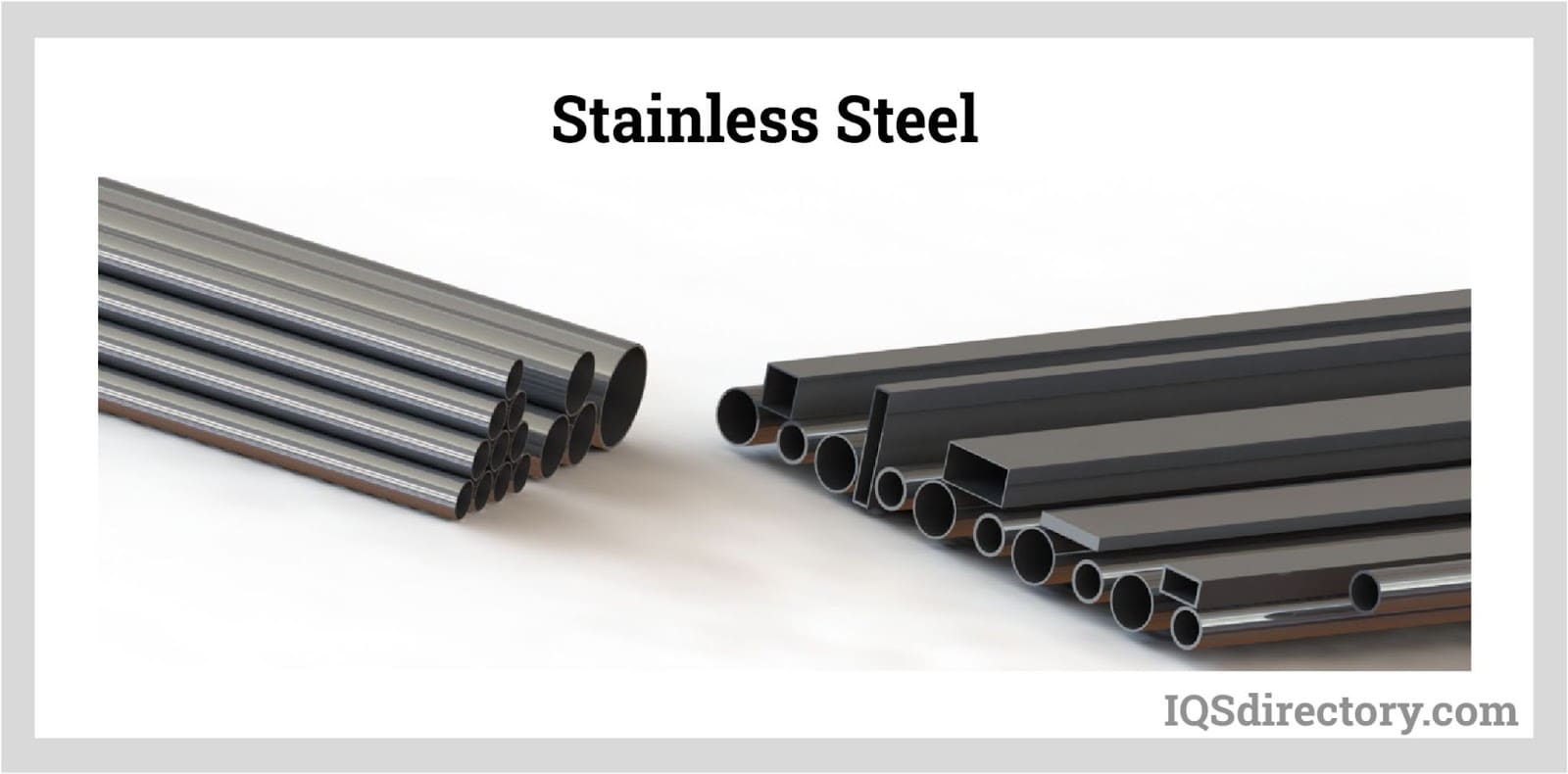
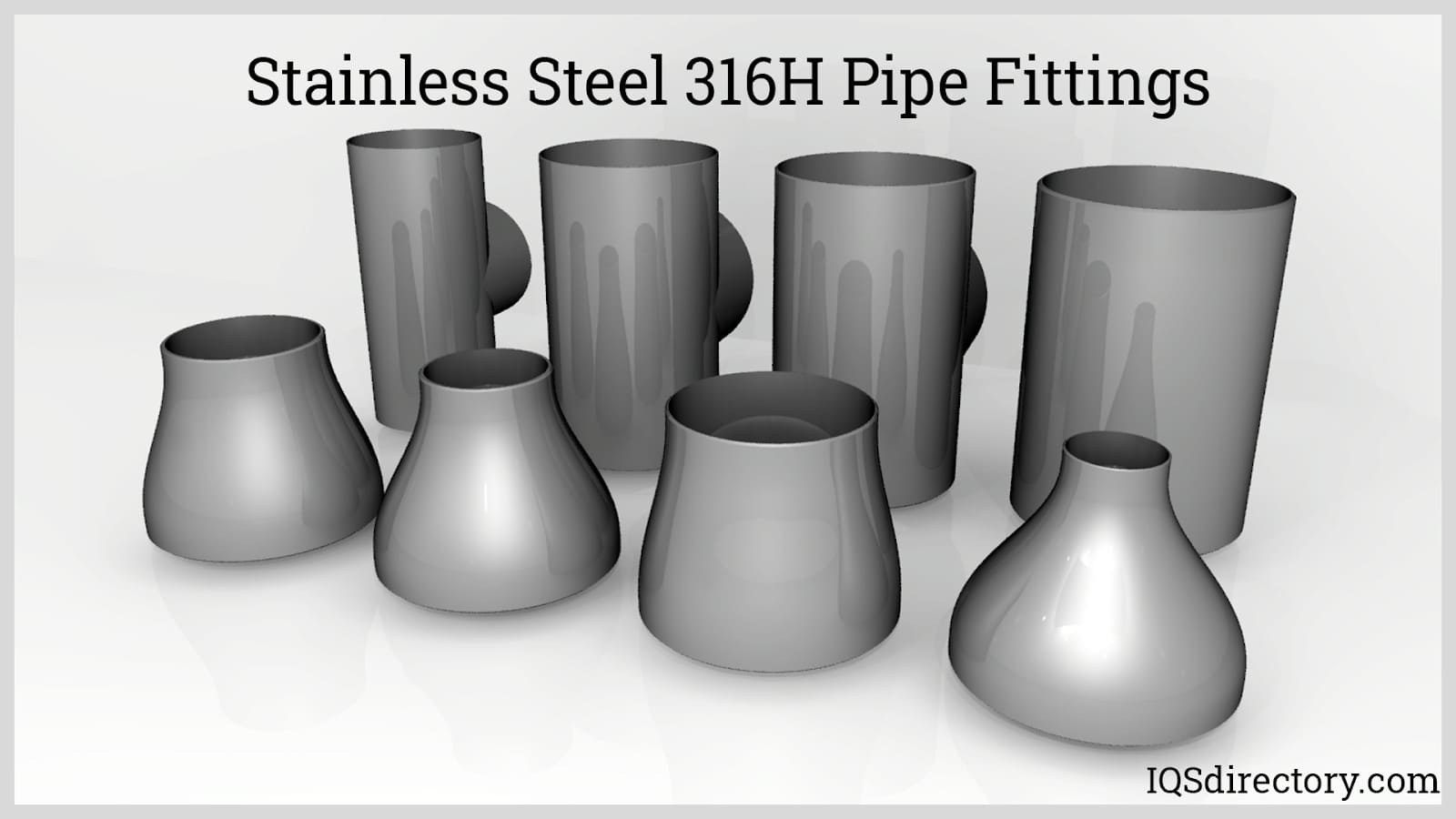
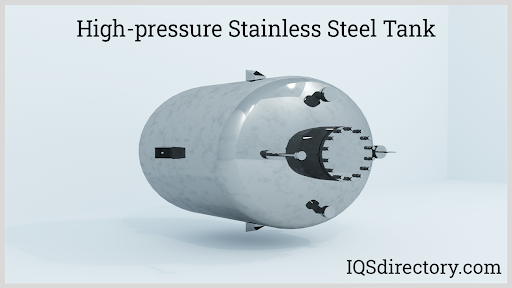
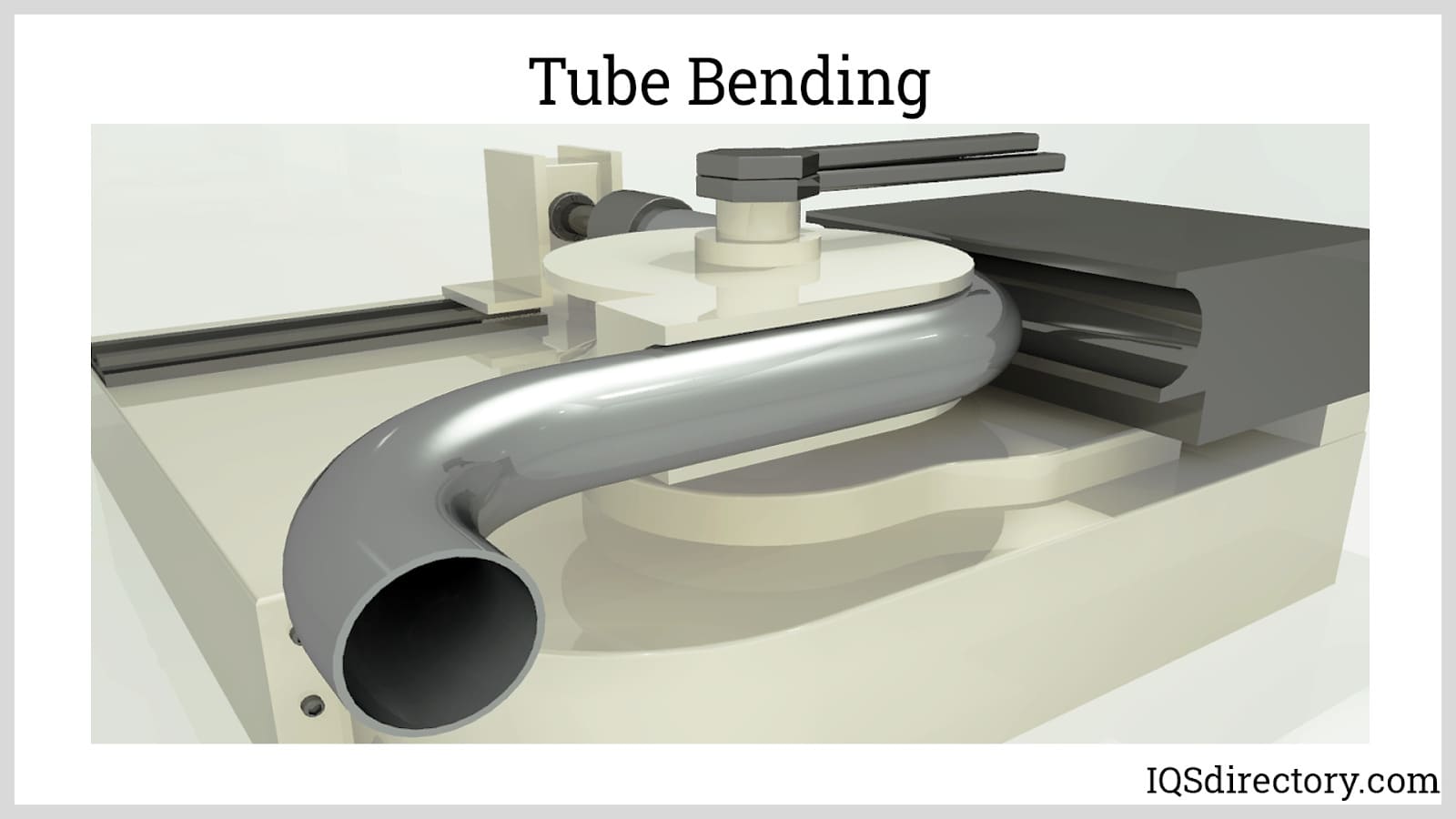
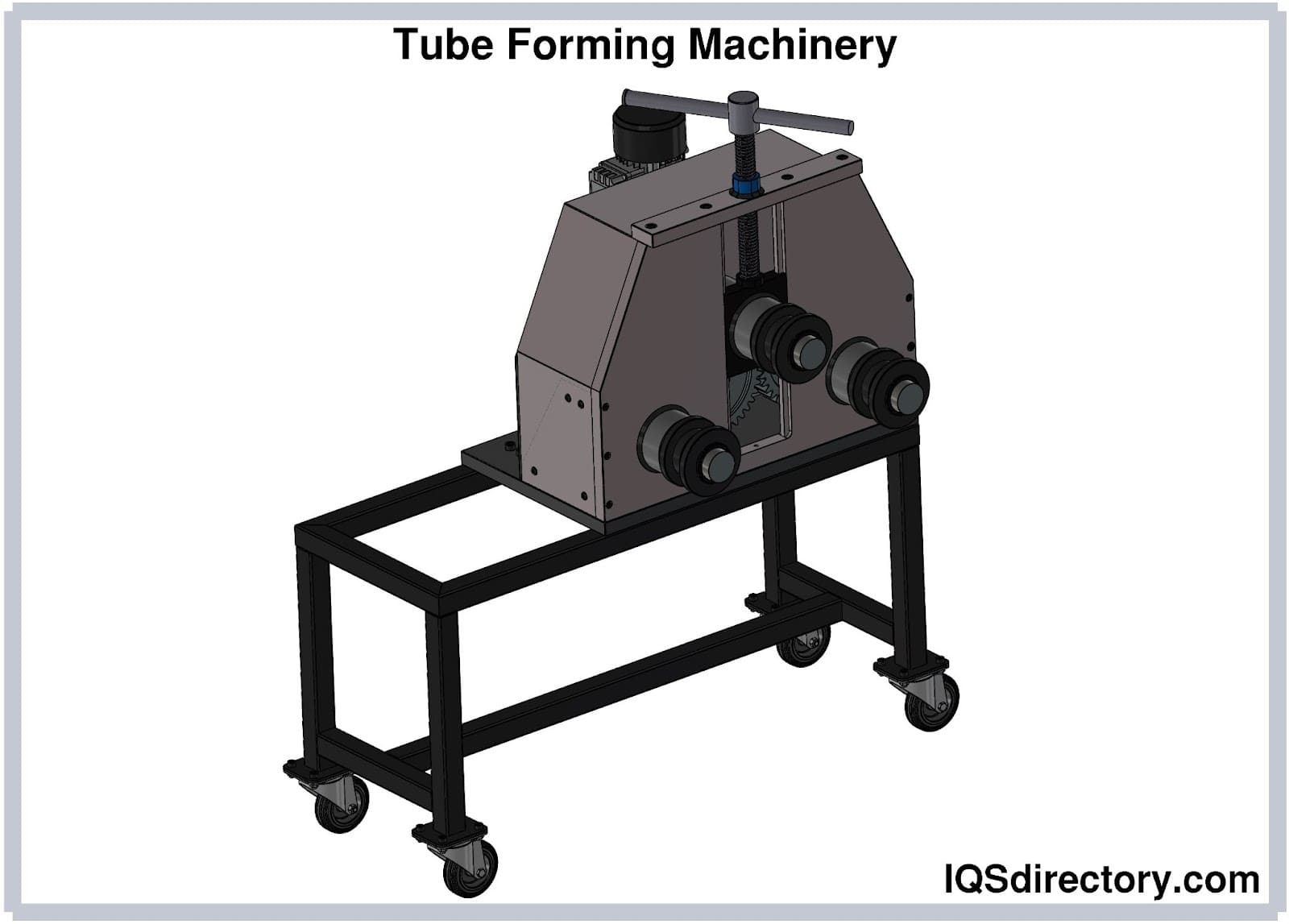
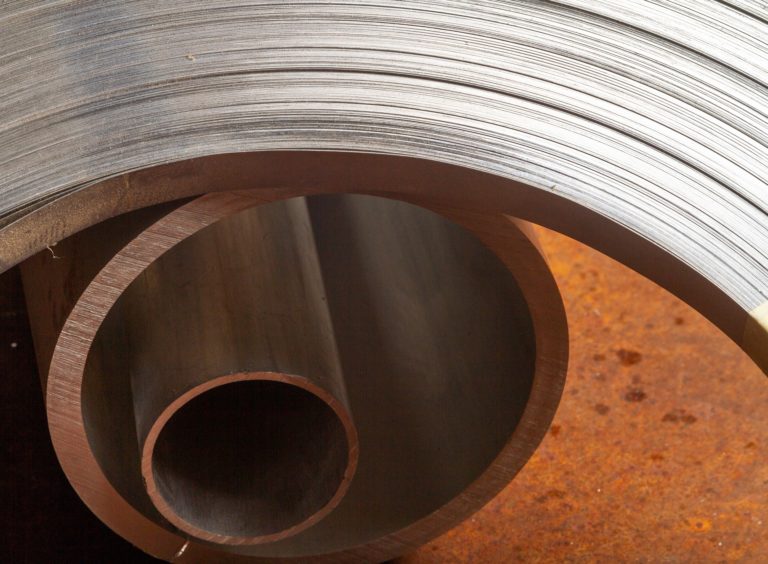 Alloy Suppliers
Alloy Suppliers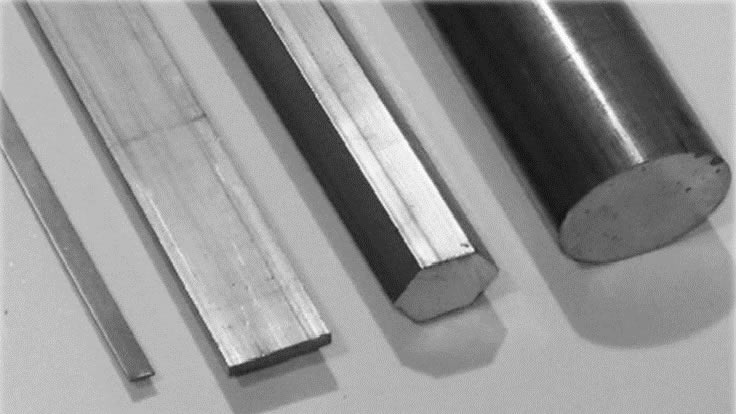 Aluminum
Aluminum Aluminum Extrusions
Aluminum Extrusions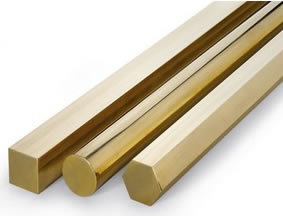 Copper-Brass-Bronze
Copper-Brass-Bronze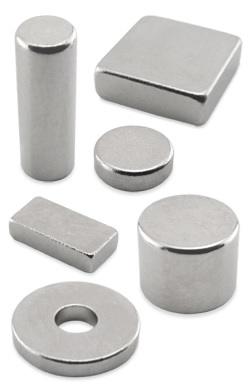 Magnets
Magnets Nickel
Nickel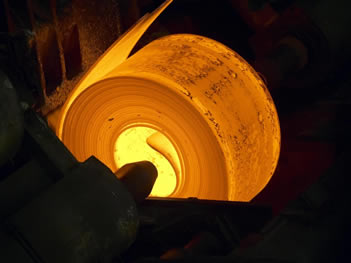 Stainless Steel
Stainless Steel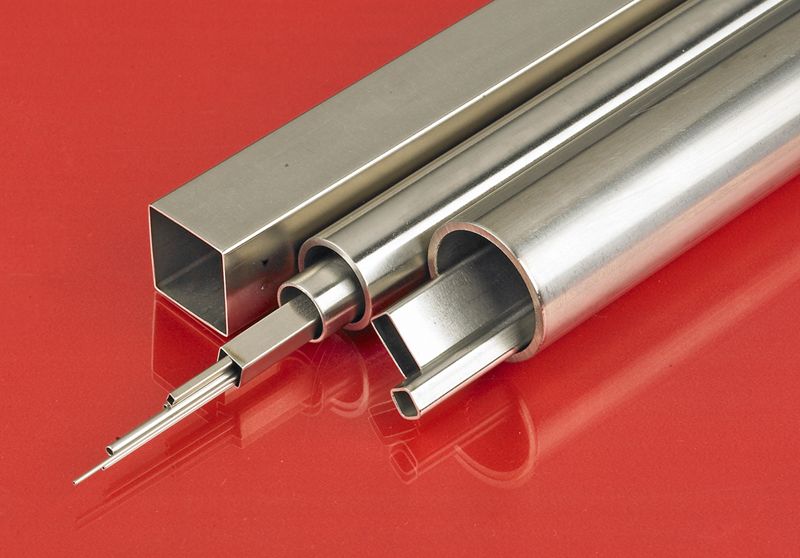 Stainless Steel Tubing
Stainless Steel Tubing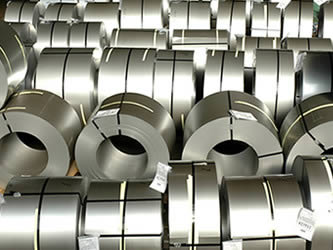 Steel Service Centers
Steel Service Centers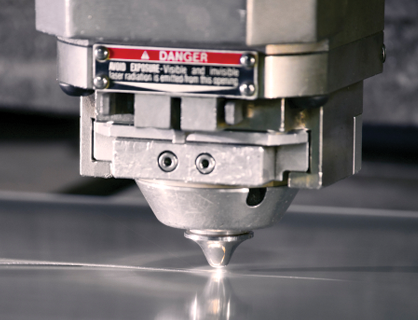 Titanium
Titanium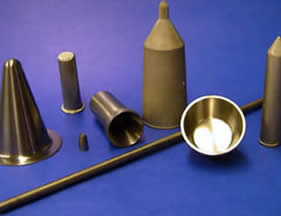 Tungsten
Tungsten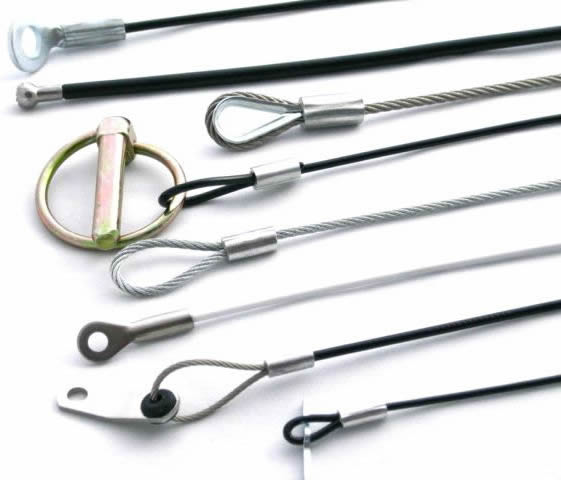 Wire Rope
Wire Rope Castings & Forgings
Castings & Forgings Bulk Material Handling
Bulk Material Handling Electrical & Electronic Components
Electrical & Electronic Components Flow Instrumentation
Flow Instrumentation Hardware
Hardware Material Handling Equipment
Material Handling Equipment Metal Cutting Services
Metal Cutting Services Metal Forming Services
Metal Forming Services Metal Suppliers
Metal Suppliers Motion Control Products
Motion Control Products Plant & Facility Equipment
Plant & Facility Equipment Plant & Facility Supplies
Plant & Facility Supplies Plastic Molding Processes
Plastic Molding Processes Pumps & Valves
Pumps & Valves Recycling Equipment
Recycling Equipment Rubber Products & Services
Rubber Products & Services